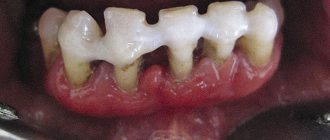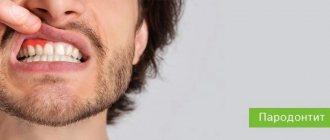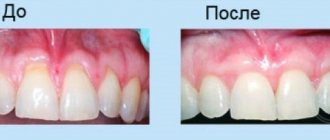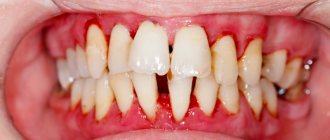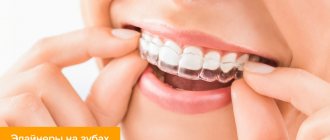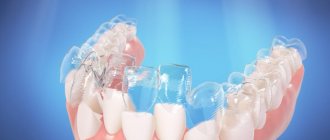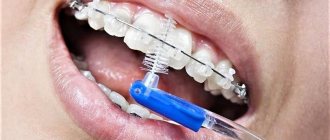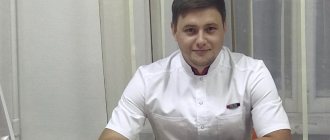Signs of TMJ inflammation
Many people do not pay attention to clicks, crunching sounds, and discomfort when opening and closing their mouth that appear in the TMJ. This happens only until the problem becomes chronic or reaches an acute stage. The following signs are characteristic:
- periodic pain in the jaw joints;
- feeling that some facial muscles are stiff;
- causeless headaches;
- limited joint mobility (inability to fully open or close the mouth);
- discomfort in the neck and back;
- stuffy ears.
Reviews
In general, a decoupling mouthguard helps to cope with a variety of problems associated with the functioning of the jaw apparatus.
People's opinions may vary, since wearing a structure has its advantages and disadvantages, but in most cases the result justifies all the inconveniences.
You can share your opinion about the effectiveness of the disconnect mouth guard and leave feedback in the comments to this article.
If you find an error, please select a piece of text and press Ctrl+Enter.
Tags: mouthguard bite correction
Did you like the article? stay tuned
No comments yet
What is a release guard?
This is a removable orthodontic structure, which is used in dentistry to relieve tension in the jaw muscles and return the lower jaw to the correct position. A mouthguard is an elastic and transparent overlay for teeth, made individually based on casts of the jaws of a particular patient. It is almost invisible in the mouth.
Such designs are used to correct various malocclusions - moving teeth to the correct position. The disconnecting mouth guard not only moves teeth, but also has a number of other functions:
- normalizes neuromuscular balance, relieving excessive muscle tone;
- stabilizes joints for proper functioning of the lower jaw;
- harmoniously distributes the load on muscles, ligaments, joints;
- changes the trajectory of jaw movement;
- Centers the lower jaw, returning it to its correct position.
Purpose, reasons for violations
Wearing a silicone pad is indicated in the presence of dysfunction of the masticatory muscles, which manifests itself:
- muscle and joint disorders;
- malocclusion;
- increased erasability of units;
- bruxism;
- diction defects;
- spasmodic muscles;
- painful sensations in the jaw.
Violations can be triggered by chronic stress or missing teeth. The treatment of these pathologies is carried out by a gnathologist or orthopedist. It is advisable to prescribe a splint before installing braces, prostheses or during post-traumatic rehabilitation.
Wearing orthodontic appliances has beneficial effects in several ways:
- elimination of muscle soreness;
- teeth become in the correct position;
- the abrasion of the enamel coating decreases;
- the general condition of the oral cavity improves.
How are release guards made?
In the manufacture of mouth guards, diagnostics plays an important role, since before treatment, a multifaceted functional analysis and accurate calculation are needed. The patient undergoes a computed tomography (CT) examination, as a result of which the doctor receives data on the condition, structure, and anatomical features of the TMJ, muscles, and ligaments. Various studies are used to determine the optimal position of the lower jaw. For example, in some clinics they use physiotherapeutic devices that relax the head muscles and identify disorders that prevent the formation of a normal bite.
The mouthguard is then made in the laboratory using impressions of the patient's jaw. The doctor first calculates the trajectory of movement of the teeth and jaw. It occurs gradually, softly and delicately, unnoticed by the patient himself.
Manufacturing stages
Most often, it is recommended to place a mouth guard on the lower jaw. There it stands out less and does not cause much inconvenience to the patient.
But sometimes it is necessary to put a splint on the upper row of teeth. To resolve this issue, many factors must be taken into account:
- purpose of the mouthguard, purpose and desired results;
- time of use;
- material, its hardness and thickness;
- defects of the jaw and teeth;
- correct bite;
- tooth mobility;
- condition of the mucous membrane and periodontium;
- aesthetics;
- accuracy and ease of fit.
The manufacturing process of the structure consists of two stages:
- Using an articulator, impressions are taken and models are created .
In total, several models of both jaws are obtained. The number of models depends on the chosen method of manufacturing the device, the central relationship of the jaws, the location of the upper jaw and the settings of the device. Indicators are determined using the face bow and the occlusion register. - The impression is sent to the laboratory after the first stage. There, using an impression, a computer model of the device is created based on the results of all the studies performed.
On the lower row model, a wax plate is formed along the border of the removable denture. Plates up to 3 mm thick are applied to the lateral teeth. They are attached to a wax base.
After softening the ridges, the bite is released to the required height. It also creates an imprint of teeth that are in an unnatural position.
The technician processes the surface of the mouth guard and gives it the shape of natural teeth, after which the device is plastered into a ditch, replacing the material with plastic.
The mouthguard is made of white plastic, imitating the color of teeth, and the base is made of reddish-pink material.
Wearing Features
The disconnecting mouthguard is practically invisible on the teeth; it is worn constantly, removing it only when eating. In some cases, it is enough to wear the structure only while sleeping. The wearing mode is determined by the orthopedic dentist. Since the material is quite thin and elastic, the patient’s diction is preserved. The mouthguard may cause discomfort only in the first days when addiction occurs.
Every 2-3 weeks you need to visit an orthopedist so that he can monitor the progress of treatment and adjust the mouth guard. Usually it is worn for 4-6 months; in complex cases, treatment can take up to a year.
RECOMMENDATION: HOW TO CARE FOR A DISCLOSING MOUTH
Twice a day, during your usual hygiene procedures, you need to rinse the structure with warm, but not hot water, removing plaque with a regular toothbrush. In this case, it is optimal to use toothpaste or antibacterial agents recommended by the dentist. The mouthguards are stored in special containers.
All about bruxism.
Bruxism is paroxysmal contractions of the masticatory muscles, which are characterized by involuntary closing of the jaws and grinding of teeth.
Most often, this disease manifests itself at night, when a person is sleeping; it occurs much less frequently during the day. In any case, this disorder negatively affects the condition of the dental units; they can become loose, and sometimes their surface is very worn out. Determining whether you suffer from bruxism is quite simple: ask one of your close relatives to watch you in your sleep, but this request may cause some difficulties, because your observer will have to stay up all night. It is best, of course, to contact a dentist so that he can examine you and assess the condition of your teeth. You should make an appointment with a specialist if you are concerned about the following symptoms:
- After waking up, your head, neck, and back begin to ache.
- The appearance of ulcers on the mucous membrane due to “biting” the inner surface of the cheeks.
- Ringing and noise in the ears, migraine.
- Changes in the shape and size of the crown of the teeth.
All of these signs may indicate another serious illness, but it is possible that you are suffering from nighttime teeth grinding. To understand this problem, it is recommended to undergo a comprehensive diagnosis from a doctor.
Bruxism can develop in both adults and children. It is simply impossible to say exactly why this or that person experiences such attacks. But there are several factors that can affect the occurrence of involuntary jaw closure:
- Frequent worries, stress.
- Smoking.
- Caffeine abuse.
- Defects in the structure of the facial skeleton.
- The presence of dental anomalies: malocclusion, missing teeth, etc.
According to the results of research by psychologists, bruxism is a reflection of emotional distress; it occurs in people experiencing constant emotional stress. In reality, they suppress their feelings, and during sleep they express them by clenching their teeth.
If at first you may not recognize the night grinding, then with regular attacks lasting only a few minutes, the enamel will gradually wear away, and the condition of the jaw joints will noticeably deteriorate. To avoid serious complications, you need to get treatment, or rather, consult a dentist. One of the best options for protecting your teeth is to make a special mouth guard.
Types of devices
There are two categories of mouthguards used to correct and eliminate defects in the jaw row:
- Relaxation products – products whose functional task is to restore natural muscle tone and eliminate excess tension that arises due to incorrect anatomical relationship of the jaws;
- Stabilizing devices are devices designed to correct the position of the mandibular region, as well as subsequently consolidate the achieved result.
The criteria used within the orthodontic classification also include an age aspect (adults and children's mouth guards). It is worth noting that, despite the differences in the rigidity of the structures, the list of functional tasks solved during the treatment process remains similar:
- Centering of the mandibular region;
- Correct redistribution of mechanical pressure;
- Preparation for correction using braces;
- Correcting the position of individual row elements;
- Bite separation for therapeutic treatment.
The selection of a suitable mouth guard is based on the results of a preliminary examination and takes into account the specifics of the diagnosed anomaly or pathology.
Diagnostic measures
Diagnosis of pathologies corrected with disconnecting aligners differs slightly from standard dental diagnostics.
The main difference is the need for a more thorough assessment of the condition of the temporomandibular joint , since in most cases it is the cause of dysfunction of the dentofacial apparatus.
Diagnosis involves the following activities:
- Questioning the patient , collecting anamnesis, examining the dentofacial apparatus and the patient’s face in order to identify malocclusions and facial asymmetry.
- X-ray of the jaws (orthopantomography, teleradiography, targeted images) and the temporomandibular joint.
- Tomography of the jaws and TMJ (if necessary).
- Sonography (listening to sounds in the TMJ).
- Casts of jaws for making and testing diagnostic models in an occluder (if necessary).
The data obtained during diagnosis is used by orthodontists to draw up a treatment plan and manufacture a disconnecting mouth guard.
